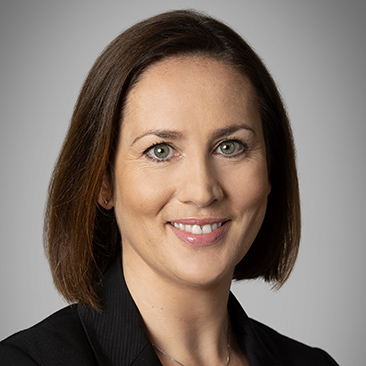On October 27, 2011, the German legislator passed the Law for the Further Facilitation of the Restructuring of Enterprises (Gesetz zur weiteren Erleichterung der Sanierung von Unternehmen, ESUG). ESUG is currently expected to become effective in the first quarter of 2012.
ESUG responds to the major weaknesses of the current German insolvency proceedings which have become apparent since May 2002 when the European Insolvency Regulation (Europäische Insolvenzverordnung) opened a level playing field for insolvency proceedings in Europe:
- General lack of predictability for the debtor and the creditors
- Lack of creditors’ and debtor’s influence on appointment of insolvency administrator
- Debt-for-equity swap subject to cooperation of debtor’s shareholders
- Self-administration preventing loss of control to insolvency administrator – unavailable after filing
- Effectiveness of insolvency plan subject to dilatory action from individual creditors
These weaknesses are perceived as instrumental for the decisions of debtors like Deutsche Nickel and Schefenacker to migrate to England and restructure under English law.
The main improvements of German insolvency proceedings implemented by ESUG are the following:
- strengthening creditors’ influence on key decisions;
- facilitating debt-equity swaps in an insolvency plan;
- facilitating self-administration; and
- reducing potential for dilatory actions against an insolvency plan.
- Strengthening Creditors’ Influence on Key Decisions
ESUG strengthens creditors’ influence on key decisions in the early stages of the insolvency proceedings by means of the preliminary creditors’ committee:
Early establishment of preliminary creditors’ committee.
ESUG regulates the establishment of a preliminary creditors’ committee as soon as practicable after the debtor’s filing for insolvency if the debtor meets two of three thresholds (EUR 4.84m balance sheet total, EUR 9.68m turnover, annual average of 50 employees). In all other cases, the insolvency court may establish a preliminary creditors’ committee upon request of the debtor, a creditor or the preliminary insolvency administrator.
Preliminary creditors’ committee participates in key decisions.
The preliminary creditors’ committee’s role has always been to support and supervise the preliminary insolvency administrator.
ESUG now requires the insolvency court to consult the preliminary creditors’ committee when appointing the preliminary insolvency administrator and when allowing or refusing the debtor’s application for self-administration. By unanimous vote, the preliminary creditors’ committee can even bind the court to appoint a certain person as preliminary insolvency administrator (subject to independency of the administrator).
Often, the immediate protection of the estate after the insolvency filing will require the court to appoint a preliminary insolvency administrator prior to establishing a creditors’ committee. In that case, ESUG allows the preliminary creditors’ committee (once established) to substitute – by unanimous vote – its candidate for the court-appointed preliminary insolvency administrator.
Court cannot refuse administrator candidate just because he has been proposed by the debtor or a creditor or because he has rendered pre-filing advice.
German insolvency law requires that the insolvency administrator is “independent from the debtor and the creditors”. In the past, some insolvency courts refused to appoint a candidate as (preliminary) insolvency administrator merely because such candidate had been proposed by the debtor and/or a creditor. ESUG now expressly provides that a candidate does not lack the required independence merely because he has been proposed by the debtor or a creditor.
While ESUG also provides that an administrator candidate does not lack independence merely because he has advised the debtor “in a general fashion about the insolvency proceedings and its consequences,” the insolvency courts can be expected to strictly examine a candidate’s indepen-dence in cases where he has advised the debtor or a creditor pre-filing. It remains to be seen whether the courts will challenge a candidate’s independence if such candidate has given pre-filing advice but is unanimously proposed by the preliminary creditors’ committee.
Facilitating Debt-Equity Swaps in an Insolvency Plan (Insolvenzplan)
Restructuring a debtor in insolvency proceedings by means of an insolvency plan (Insolvenzplan) often involves a debt-for-equity swap. In the past, the debtor’s shareholders could not be made parties to the insolvency plan. Therefore, an insolvency plan involving a debt-for-equity swap was subject to the cooperation of the debtor’s shareholders, effectively giving them unjustified hold-out value.
ESUG allows to include the debtor’s shareholders in the insolvency plan. They vote as a separate group and – should they not approve the plan – the plan will be crammed-down on them provided, inter alia, that no creditor receives more under the plan than the full amount of its claim.
Facilitating Debtor’s Access to Self-Administration (Eigenverwaltung)
As an alternative to the administration of the debtor’s business by an insolvency administrator, the insolvency court may allow the debtor to self-administrate under the supervision of a trustee (Sachwalter). In practice, however, self-administration has been rarely used, mainly because it was only available upon the opening of proceedings, subjecting the debtor to the control of the preliminary insolvency administrator from the day of filing until the opening of proceedings (i.e., usually for up to three months).
ESUG provides that the insolvency court shall appoint a preliminary trustee (rather than a preliminary insolvency administrator) if the debtor applies for self-administration when filing for insolvency and if its application is not evidently without merits. When opening insolvency proceedings, the court will not allow self-administration if this would likely be to the detriment of the creditors. However, self-administration is deemed not to be to the detriment of the creditors if it is backed by a unanimous resolution of the preliminary creditors’ committee.
Introducing a New Umbrella Proceeding (Schutzschirmverfahren)
To Facilitate Pre-Packaged Restructurings
In order to facilitate the preparation of a pre-packaged insolvency plan, ESUG introduces a new umbrella proceeding (Schutzschirmverfahren):
- If the debtor files for insolvency and applies for self-administration, the court allows it a period of up to three months to prepare and submit an insolvency plan, provided the debtor is not yet illiquid and submits an expert opinion that the contemplated restructuring is not evidently futile.
- For the period allowed to prepare the insolvency plan, the court appoints a preliminary trustee to supervise the debtor’s management and, upon debtor’s request, prohibits creditors’ enforcement actions and allows the debtor to create administrative claims (Masseverbindlichkeiten).
- Upon submission of the insolvency plan, the court opens insolvency proceedings, allows the debtor’s self-administration, and invites the creditors to vote upon the insolvency plan. The creditors’ interest is protected by the preliminary creditors’ committee, which can request the court to terminate the umbrella proceedings and appoint a preliminary administrator.
Reducing the Potential for Dilatory Action Against an Insolvency Plan
ESUG increases the hurdles for individual creditors’ remedies against an insolvency plan which has received the votes of the majority of the creditors. In particular, ESUG allows the court to confirm a plan irrespective of a creditor’s motion filed against such plan if such plan provides for funds to indemnify creditors who can evidence that the plan is to their detriment.
More from the Weil European Restructuring Blog
This website is maintained by Weil, Gotshal & Manges LLP in New York, NY © 2020 Weil, Gotshal & Manges LLP, All Rights Reserved. The contents of this website may contain attorney advertising under the laws of various states. Quotation with attribution is permitted. This publication is provided for general information purposes only and is not intended to cover every aspect of the purpose for the law. The information in this publication does not constitute the legal or other professional advice of Weil London or the authors. The views expressed in this publication reflect those of the authors and are not necessarily the views of Weil London or of its clients. These materials may contain attorney advertising. Prior results do not guarantee a similar outcome.
















